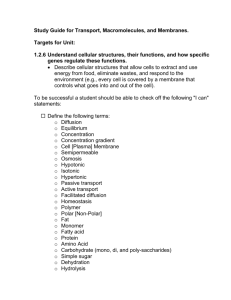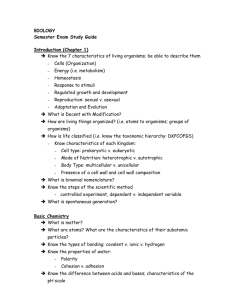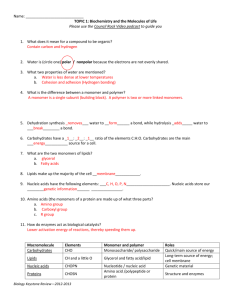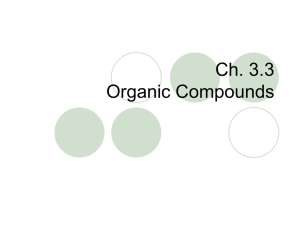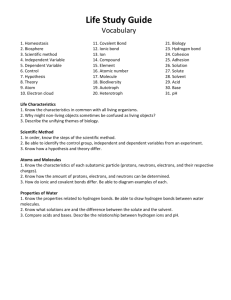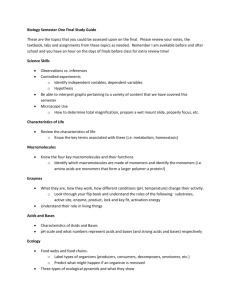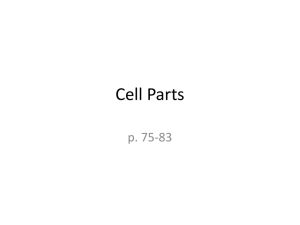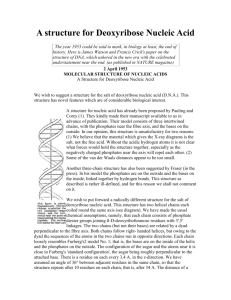Science 103: Study Guide (Exam 1)
advertisement
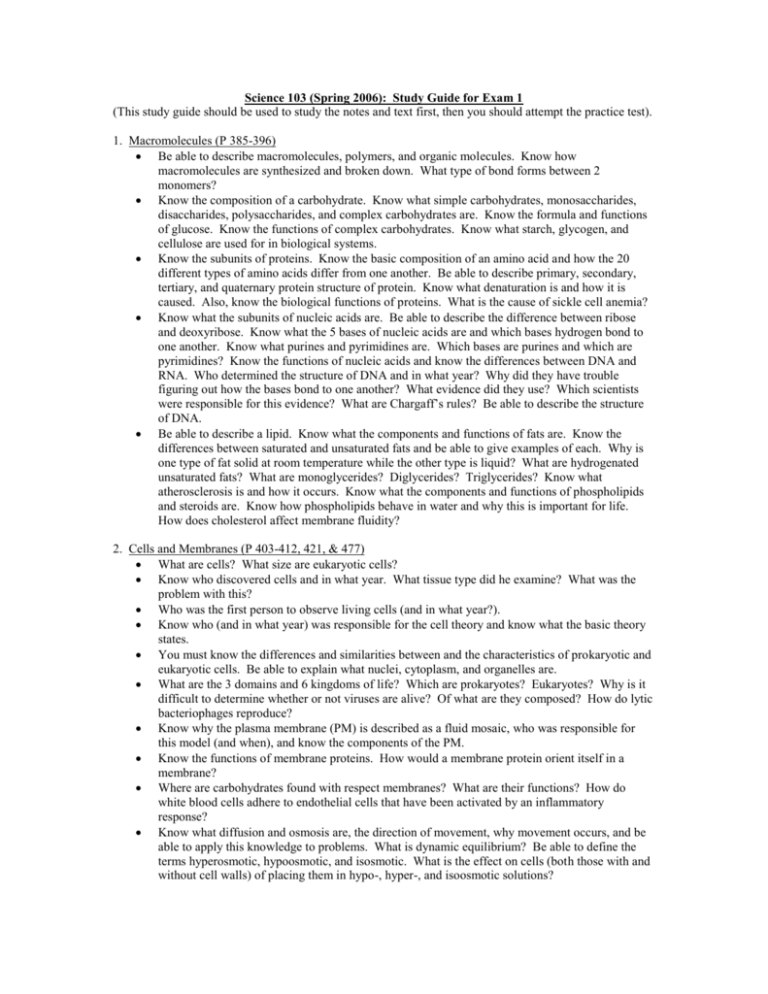
Science 103 (Spring 2006): Study Guide for Exam 1 (This study guide should be used to study the notes and text first, then you should attempt the practice test). 1. Macromolecules (P 385-396) Be able to describe macromolecules, polymers, and organic molecules. Know how macromolecules are synthesized and broken down. What type of bond forms between 2 monomers? Know the composition of a carbohydrate. Know what simple carbohydrates, monosaccharides, disaccharides, polysaccharides, and complex carbohydrates are. Know the formula and functions of glucose. Know the functions of complex carbohydrates. Know what starch, glycogen, and cellulose are used for in biological systems. Know the subunits of proteins. Know the basic composition of an amino acid and how the 20 different types of amino acids differ from one another. Be able to describe primary, secondary, tertiary, and quaternary protein structure of protein. Know what denaturation is and how it is caused. Also, know the biological functions of proteins. What is the cause of sickle cell anemia? Know what the subunits of nucleic acids are. Be able to describe the difference between ribose and deoxyribose. Know what the 5 bases of nucleic acids are and which bases hydrogen bond to one another. Know what purines and pyrimidines are. Which bases are purines and which are pyrimidines? Know the functions of nucleic acids and know the differences between DNA and RNA. Who determined the structure of DNA and in what year? Why did they have trouble figuring out how the bases bond to one another? What evidence did they use? Which scientists were responsible for this evidence? What are Chargaff’s rules? Be able to describe the structure of DNA. Be able to describe a lipid. Know what the components and functions of fats are. Know the differences between saturated and unsaturated fats and be able to give examples of each. Why is one type of fat solid at room temperature while the other type is liquid? What are hydrogenated unsaturated fats? What are monoglycerides? Diglycerides? Triglycerides? Know what atherosclerosis is and how it occurs. Know what the components and functions of phospholipids and steroids are. Know how phospholipids behave in water and why this is important for life. How does cholesterol affect membrane fluidity? 2. Cells and Membranes (P 403-412, 421, & 477) What are cells? What size are eukaryotic cells? Know who discovered cells and in what year. What tissue type did he examine? What was the problem with this? Who was the first person to observe living cells (and in what year?). Know who (and in what year) was responsible for the cell theory and know what the basic theory states. You must know the differences and similarities between and the characteristics of prokaryotic and eukaryotic cells. Be able to explain what nuclei, cytoplasm, and organelles are. What are the 3 domains and 6 kingdoms of life? Which are prokaryotes? Eukaryotes? Why is it difficult to determine whether or not viruses are alive? Of what are they composed? How do lytic bacteriophages reproduce? Know why the plasma membrane (PM) is described as a fluid mosaic, who was responsible for this model (and when), and know the components of the PM. Know the functions of membrane proteins. How would a membrane protein orient itself in a membrane? Where are carbohydrates found with respect membranes? What are their functions? How do white blood cells adhere to endothelial cells that have been activated by an inflammatory response? Know what diffusion and osmosis are, the direction of movement, why movement occurs, and be able to apply this knowledge to problems. What is dynamic equilibrium? Be able to define the terms hyperosmotic, hypoosmotic, and isosmotic. What is the effect on cells (both those with and without cell walls) of placing them in hypo-, hyper-, and isoosmotic solutions? What is bulk transport (across cell membranes)? What are the differences between endocytosis and exocytosis? What is phagocytosis? Pinocytosis? What is facilitated diffusion? In which direction do the transported materials travel? What is active transport? What are ion channels? How do they allow polar substances to cross the membrane? Also know which type(s) of transport require an input of energy and which are spontaneous.
